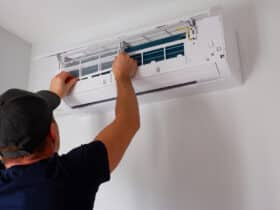Every homeowner dreams of a lush lawn that looks straight out of a catalog. Overseeding is one landscaping method that can help you achieve that dream. This process involves spreading grass seed on an existing lawn to fill in bare spots. The young grass proliferates quickly, so it blocks weeds from flourishing.
As powerful as the results are, overseeding can be expensive and time-consuming, so you want to do it correctly the first time. Here are six pro tips for the overseeding beginner.
Invest in a premium grass seed product
For best results, use quality grass seeds retailers like Nature’s Seed. The best choices include tried-and-true grasses like Kentucky bluegrass, tall or red fescue, and perennial or annual ryegrass. Depending on your humidity, average temperature, and shade, there’s a species of grass that’s perfect for your yard.
Overseed in the correct season
The soil temperature affects how grass seed germinates, so the time of year you spread new seed matters. Grass seeds like Kentucky Bluegrass, ryegrass, and fescue need soil at least 55°F to grow, making any winter overseeding projects a no-go.
The air temperature should be between 60°F and 80°F for ideal results, so for many homeowners, the best time to plant is in the late spring or early fall. Homeowners should avoid overseeding in the heat of the summer, as extreme heat slows germination and growth.
Cut your grass before you spread the seed
The key to success when overseeding is ensuring the seed makes contact with the soil. The easiest way to ensure contact is to cut your grass as low as possible before spreading the seed. Don’t cut your grass down to the root, but keep it short. Then, rake your grass, put down some topsoil, and spread the seed.
If you don’t spread the seed down into the soil, it cannot germinate. You can guarantee more successful germination by laying peat moss over your soil. The moss holds moisture in the soil and helps the seeds sprout.
Let the sunshine through
Green grass needs sunlight to grow, and the seeds need light to encourage germination. Peat moss lets the sun through, but placing straw over grass seed does not. Only lay ¼-inch of peat moss on your new grass.
You can also help your grass grow by trimming your trees enough to let the sunlight shine on your grass. Hire a tree-pruning expert to help you with the process.
Remember to water your new grass seed
Grass seed needs water to grow, but if you overdo the water, you can drown the seed. The area you overseed needs constant moisture, but not a thorough soaking. If you let the site dry out, the seeds could die. Once you see the grass growing, let it dry a bit before each watering.
Avoid weed killer products
While you are growing your new grass seed, avoid putting weed killers on your grass. Those products prevent grass seeds from succeeding. Don’t worry about weeds growing up in the meantime, as a successful overseeding will block sunlight from reaching any unwanted growth.
Wrap up
Growing new grass and improving your landscaping involves more than spreading a bunch of seeds on the ground. You’ve got to prepare the area, use the right type of seed, and feed your new grass enough water and sunlight. That said, the extra work is well worth the gorgeous green lawn that results.













